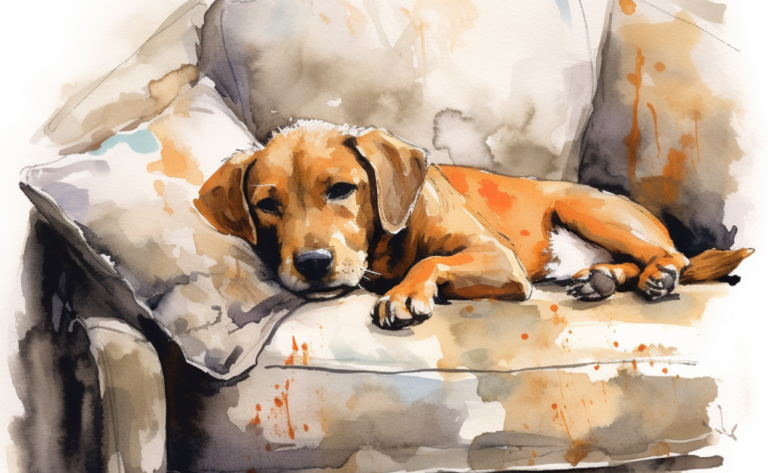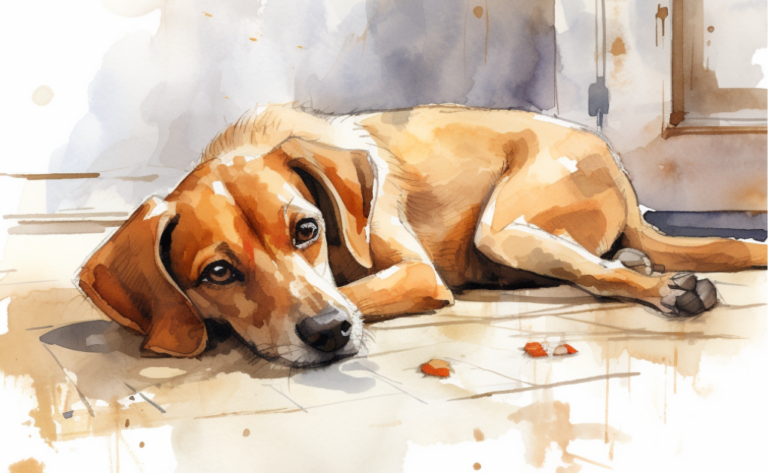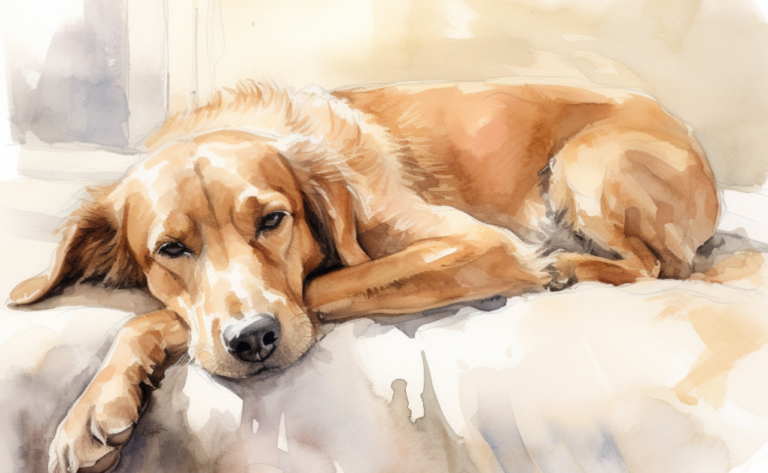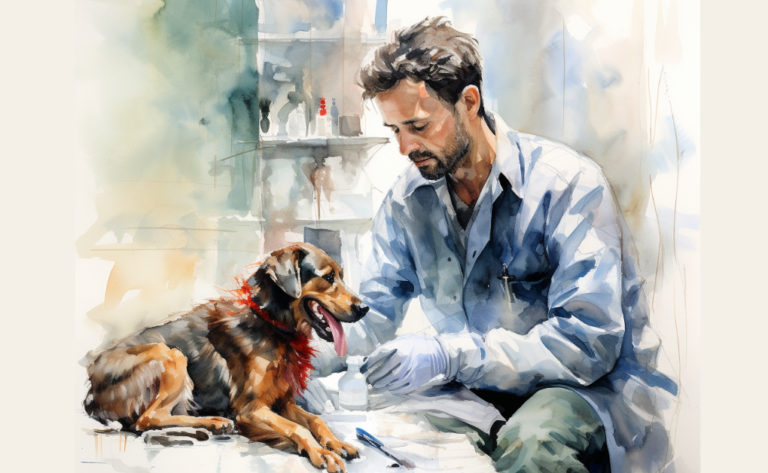What is Medial Luxating Patella in Dogs?
What is it?
How is it Treated?
Breed Predispositions
Chihuahuas Pomeranians Toy Poodles Yorkshire Terriers Boston Terriers Cavalier King Charles Spaniels French Bulldogs Jack Russell Terriers Miniature Pinschers Shih Tzus
Introduction
As Tom watched his spirited Jack Russell Terrier, Daisy, frolic around the park, he couldn’t help but notice her occasional skipping and limping on one of her hind legs. Concerned about his beloved pet’s well-being, he decided to consult his veterinarian for a thorough examination. After evaluating Daisy, the vet diagnosed her with a medial luxating patella, a common orthopedic condition in small breed dogs.
A medial luxating patella, or patellar luxation, is a frequent orthopedic issue in dogs where the kneecap (patella) dislocates or shifts from its usual position within the femur’s (thigh bone) groove. This results in discomfort, limping and diminished mobility in the dogs affected. Medial patellar luxations are commonly observed in small and toy-breed dogs, mainly due to genetic predisposition, trauma, or developmental abnormalities. Notably, almost half of the dogs affected by this condition experience knee damage.
The patella, connected by the patellar ligament to the shin bone, plays a crucial role in the functioning of the quadriceps muscle. Any dislocation, whether medial (towards the body’s midline) or lateral patella luxation (away from the body’s midline), can significantly impact a dog’s mobility. This condition can sometimes be related to other knee issues, such as damage to the cranial cruciate ligament. Small-breed dogs, in particular, are often more prone to this condition.
Classifications of Patellar Luxation in Dogs
Dogs with patellar luxation can be categorized into four grades, depending on the severity of the condition:
- Grade I: Once released, the kneecap (patella) can be manually dislocated, but it spontaneously returns to its normal position within the trochlear or femoral groove. The dog might not exhibit noticeable signs or may display occasional mild lameness.
- Grade II: The patella may also spontaneously luxate occasionally, leading to intermittent lameness in the dog. While it can be manually returned to its position, it may spontaneously luxate again.
- Grade III: The kneecap remains perpetually dislocated but can be manually repositioned, although it will luxate again once released. Consequently, the dog will endure consistent lameness and may struggle with walking.
- Grade IV: The patella is permanently dislocated and cannot be manually repositioned. The dog will exhibit constant lameness, and its leg might be held in a bent position. This stage is severe and generally necessitates surgical intervention.
Furthermore, it’s essential to recognize that patellar luxation can be either medial or lateral, depending on the kneecap’s dislocation direction. Medial patellar luxation is more prevalent when the kneecap dislocates towards the leg’s inside. Conversely, lateral patellar luxation transpires when the kneecap dislocates towards the leg’s outside.
Certain breeds, including small dogs like the Yorkshire Terrier and Boston Terrier, are more prone to this condition, particularly medial luxation. The patellar tendon, connected to the femur (thigh bone), plays a crucial role in knee stability, and any dislocation can significantly affect the dog’s mobility.
Two Categories of Patellar Luxation
In addition to the classifications based on severity and direction of dislocation, patellar luxation can also be categorized as congenital or acquired.
Congenital Patellar Luxation
Congenital patellar luxation is present at birth or develops shortly after that. Genetic factors often cause it, and certain breeds like Toy and Miniature Poodles, Chihuahuas, Yorkshire Terriers, and Pomeranians are more prone to this condition. In congenital cases, structural abnormalities in the bones, muscles, and connective tissues contribute to the development of patellar luxation.
Acquired Patellar Luxation
Acquired patellar luxation, on the other hand, occurs later in life, typically due to trauma, injury, or gradual degeneration of the joint structures. In addition, overweight dogs are more prone to acquired patellar luxation because the excess weight puts additional stress on the joints, increasing the risk of injury and dislocation.
Causes of Luxating Patella in Dogs
A medial luxating patella, also known as a slipped kneecap, can be caused by various factors. Understanding the root causes of this condition can help dog owners identify risk factors and take preventive measures.
- Genetics: Genetic predisposition plays a significant role in the development of the medial luxating patella. Certain small and toy breeds, such as Toy and Miniature Poodles, Chihuahuas, Yorkshire Terriers, and Pomeranians, are more prone to this condition due to their genetic makeup. In these cases, structural abnormalities in the bones, muscles, and connective tissues contribute to the development of patellar luxation.
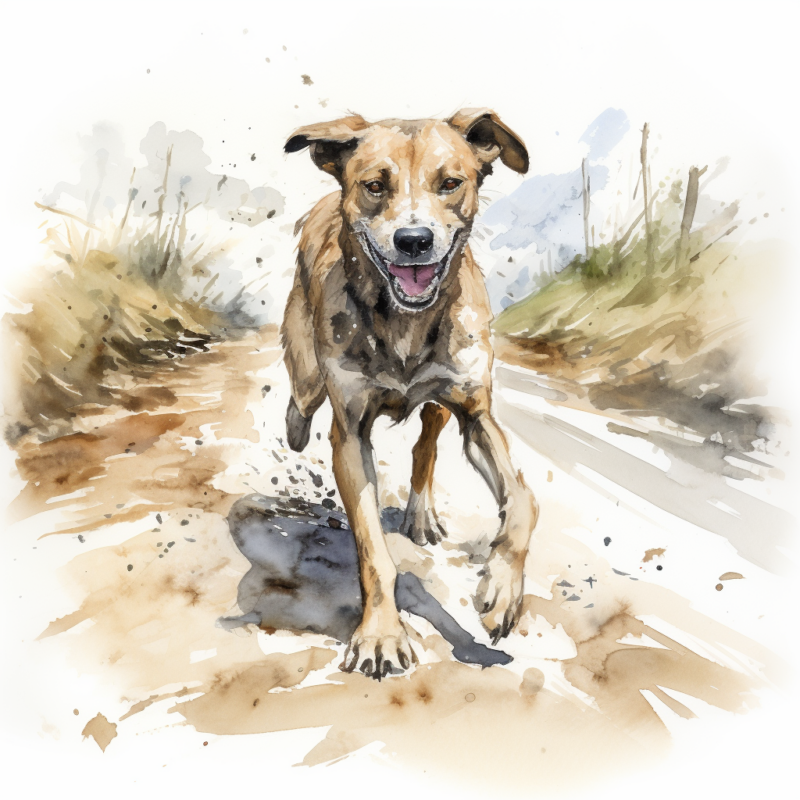
- Trauma or Injury: Acquired patellar luxation can occur due to an external force, such as a fall or collision. Injuries to the ligaments and joint structures can lead to instability and dislocation of the kneecap.
- Degenerative Joint Disease: Over time, wear and tear on the joints can cause the development of a medial luxating patella. This is especially true for older or overweight dogs, where the additional stress on the joints can contribute to joint degeneration and eventual dislocation of the kneecap.
- Muscle Imbalances: In some cases, uneven muscle development or weakness in the muscles surrounding the knee joint can lead to instability and dislocation of the patella. This may be due to poor nutrition, inadequate exercise, or other underlying health issues.
- Congenital Abnormalities: Some dogs are born with structural abnormalities predisposing them to a medial luxating patella. These can include misaligned bones, shallow femoral grooves, or lax ligaments that fail to hold the kneecap in place properly.
Prevention and early intervention are crucial in managing medial luxating patella. Identifying and addressing the underlying causes can help reduce the risk of complications and ensure a better quality of life for affected dogs.
Symptoms of Medial Patellar Luxation in Dogs
The severity of medial patellar luxation, characterized by a displaced kneecap, can be gauged through four established grades, each associated with specific symptoms:
Grade 1 Symptoms
The kneecap can be manually dislocated in the most benign form but readily pops back into its rightful position when let go. In addition, the affected dog may show no signs, occasional lameness, skipping, or an abnormal gait.
Grade 2 Symptoms
The kneecap may spontaneously luxate with movement in this stage but can still be manually repositioned. Signs that an affected dog may exhibit include:
- more frequent limping
- skipping
- abnormal gait
- difficulty jumping, running, or climbing stairs.
Grade 3 Symptoms
The kneecap remains displaced at this more serious level but can be manually relocated. However, it will instantly luxate once released. Dogs may suffer from the following:
- persistent limping
- abnormal gait
- pain
- reduced activity levels
- may also have muscle atrophy
- difficulty bearing weight on the affected leg
Grade 4 Symptoms
This grade represents the most severe form, where the kneecap is permanently luxated and cannot be manually repositioned. Dogs with Grade 4 medial patellar luxation often display:
- significant lameness
- pain
- may be unable to bear weight on the affected leg
- joint swelling
- muscle atrophy
- reduced range of motion in the affected joint.
The intensity of clinical symptoms can fluctuate from one dog to another, even within the same grade, and may escalate over time without appropriate veterinary medicine intervention. Therefore, it is crucial to consult a veterinarian if you suspect your dog may be experiencing intermittent luxation of the patella. This condition can occur particularly in breeds with disproportionate long bones, affecting the alignment and stability of the stifle joint in the affected leg.
Diagnosing Medial Luxating Patella in Dogs
Diagnosing medial luxating patella in dogs calls for an integrative approach that includes a comprehensive physical examination, palpation of the joint in question, and additional diagnostic tests to verify the diagnosis and gauge the condition’s severity. Here is the methodology vets employ to diagnose medial luxating patella in dogs:
- Physical examination: The vet’s first step involves scrutinizing the dog’s walking style and noting any indications of limping, skipping, or abnormal gait patterns that may hint at patellar luxation.
- Palpation: The vet carefully palpates the dog’s knee joint to discern whether the kneecap is displaced or can be manually luxated. This crucial step can assist in determining the grade of patellar luxation and identifying any associated discomfort or pain.
- Radiographs (X-rays): X-rays of the leg affected by the condition may be conducted to examine the overall bone structure, gauge the level of joint deformity, and exclude other potential causes of the dog’s symptoms, such as fractures or joint infections. The position of the tibial crest can be particularly informative.
- Orthopedic evaluation: In some instances, a more in-depth orthopedic evaluation may be required, which could involve referral to a specialist at an animal hospital. This can provide a more detailed assessment of the extent of the luxation and any associated joint or ligament damage and inform the most suitable treatment plan, especially in cases of lateral patellar luxation.
- Additional diagnostic tests: Depending on the individual case, the vet may recommend further tests like blood work, CT scans, or MRI. These can give a more holistic understanding of the dog’s overall health and spot any underlying health issues contributing to the repeated luxation of the patella.
Accurate diagnosis of a medial luxating patella is vital in determining the correct treatment strategy and effectively managing the condition. This can significantly enhance the dog’s quality of life and reduce the risk of enduring complications.
Treatment Options for Medial Luxating Patella in Dogs
Treating medial luxating patella in dogs is tailored to the severity of the condition, the dog’s overall health, and any associated complications. Here’s how vets treat medial luxating patella in dogs:
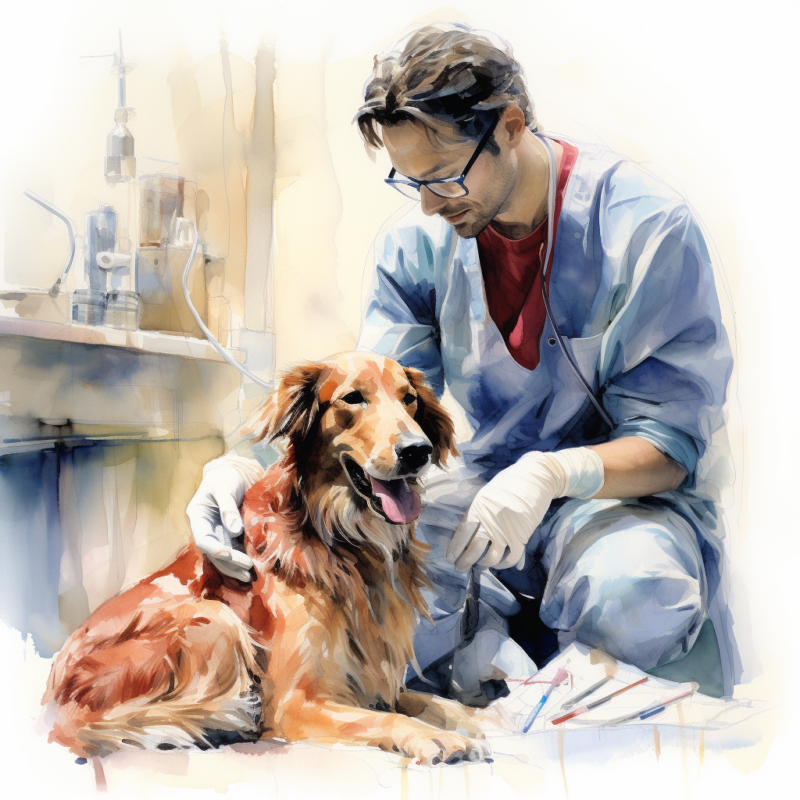
Conservative Management
Conservative management may be recommended for mild cases (Grade I or II). Conservative management for medial luxating patella in dogs typically includes the following components:
- Weight management
- Physical therapy
- Controlled exercise
- Anti-inflammatory medications
- Joint supplements
Conservative management aims to control the symptoms of the medial luxating patella without resorting to surgical intervention. However, surgical treatment may be necessary if conservative measures don’t provide sufficient relief or worsen the condition.
Surgical Intervention
Surgery may be necessary to correct the patellar luxation in more severe cases (Grade III or IV) or when conservative management is unsuccessful. There are several surgical techniques veterinarians may use to treat medial luxating patella in dogs, depending on the severity of the condition and the specific needs of the individual dog.
Some of the most common surgeries for medial luxating patella include:
- Trochleoplasty: This orthopedic surgery deepens the groove (trochlear groove) where the patella typically sits, providing better stability and preventing the patella from slipping out of place.
- Tibial Tuberosity Transposition: In this surgery, the attachment of the patellar ligament to the tibia (tibial tuberosity) is repositioned to realign the forces acting on the patella, helping to keep it in the correct position.
- Soft Tissue Reconstruction: This surgery involves tightening or loosening the soft tissues around the knee joint, such as the joint capsule and ligaments, to help stabilize the patella and prevent luxation.
- Wedge recession Trochleoplasty: In this technique, a wedge-shaped trochlear groove is removed, allowing the surgeon to deepen the groove and improve patellar stability.
- Combination surgeries: In some cases, combining the above surgical techniques may be necessary to effectively address the dog’s medial luxating patella and provide the best possible outcome.
Medial luxating patellar surgeries in dogs can significantly improve a dog’s quality of life, especially when conservative management is unsuccessful. However, it’s essential to consider the pros and cons of these surgeries before deciding on a treatment plan.
Pros of medial luxating patellar surgeries:
- Pain relief: Surgery can help alleviate the pain and discomfort associated with medial luxating patella by stabilizing the patella and correcting any underlying deformities.
- Improved mobility: Dogs with severe patellar luxation may have difficulty walking or running. Surgical correction can restore normal joint function, allowing the dog to move more comfortably and confidently.
- Prevention of further joint damage: If left untreated, the medial luxating patella can lead to progressive joint damage, including osteoarthritis. Surgery can help prevent or slow down the development of these complications.
- Customized treatment: Various surgical techniques are available to address each patient’s specific needs, allowing for tailored treatment based on the severity of the condition and the individual dog’s anatomy.
Cons of medial luxating patellar surgeries:
- Anesthesia risks: As with any surgery, there are risks associated with anesthesia, including allergic reactions, difficulty breathing, or even death, although these risks are generally low.
- Postoperative complications: Potential complications from surgery include infection, excessive bleeding, nerve damage, or recurrence of patellar luxation.
- Recovery and rehabilitation: The recovery period after surgery can be lengthy, often requiring several weeks or months of limited activity, physical therapy, and close monitoring. This can be challenging for both the dog and the owner.
- Cost: Surgical treatment for medial luxating patella can be expensive, with prices varying depending on the complexity of the surgery, the surgeon’s expertise, and the geographical location.
- No guarantee of success: While many dogs experience significant improvements following surgery, there is no guarantee that the surgery will ultimately succeed or that the condition will not recur.
In conclusion, medial luxating patellar surgeries can offer numerous benefits for dogs suffering from the condition, but it is crucial to weigh the pros and cons carefully. Consulting with your veterinarian and potentially seeking a second opinion from a veterinary orthopedic specialist can help guide your decision-making process.
Postoperative Care
After surgery, the dog will require a period of rest and restricted activity to allow the joint to heal. Physical therapy and a gradual return to exercise will help regain strength and flexibility in the affected leg. Pain management and anti-inflammatory medications may also be prescribed during the recovery period.
Ongoing Monitoring
Regular follow-up appointments with the vet will be necessary to monitor the dog’s progress and ensure the treatment plan is effective. In some cases, adjustments to the treatment plan may be required, such as changes in medication or the addition of supportive therapies like hydrotherapy or acupuncture.
Prompt and appropriate treatment of medial luxating patella can significantly improve the dog’s quality of life, reduce pain and discomfort, and minimize the risk of long-term joint damage and arthritis.
Prevention of Medial Luxating Patella in Dogs
Preventing medial luxating patella in dogs is not always possible, as the condition can have genetic and developmental components. However, some steps can be taken to minimize the risk and manage potential factors that contribute to the development of the condition:
- Responsible breeding practices: Choosing dogs from reputable breeders who prioritize health, temperament, and conformation can help reduce the risk of passing on genetic predispositions to the medial luxating patella. Breeders should screen their breeding dogs for this condition and avoid breeding those with a history of patellar luxation.
- Proper nutrition and weight management: Providing your dog with a balanced diet and maintaining a healthy weight can help reduce the stress on their joints, including the patella. Obesity can exacerbate joint problems, so monitoring your dog’s weight and adjusting their food intake and exercise is essential.
- Regular exercise: Regular, moderate exercise can help maintain muscle strength and joint flexibility, which may help support the patella and reduce the risk of luxation. However, avoiding excessive or high-impact activities that could injure the knee joint is crucial.
- Routine veterinary care: Regular check-ups with your veterinarian can help identify any signs of medial luxating patella early on. Early detection and intervention can lead to better management of the condition and may reduce the risk of complications.
- Joint supplements: Some veterinarians may recommend joint supplements containing glucosamine, chondroitin, or other joint-supporting ingredients to promote joint health and help maintain the stability of the patella.
While it may not be possible to completely prevent medial luxating patella in dogs, following these guidelines can help minimize the risk and ensure your dog has the best chance at a healthy, happy life.
Frequently Asked Questions
Disclaimer: The information provided on this veterinary website is intended for general educational purposes only and should not be considered as a substitute for professional veterinary advice, diagnosis, or treatment. Always consult a licensed veterinarian for any concerns or questions regarding the health and well-being of your pet. This website does not claim to cover every possible situation or provide exhaustive knowledge on the subjects presented. The owners and contributors of this website are not responsible for any harm or loss that may result from the use or misuse of the information provided herein.


